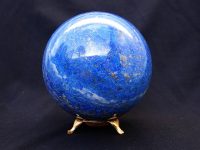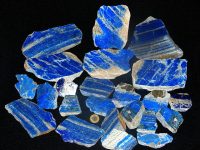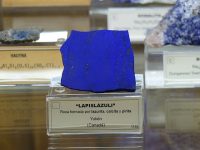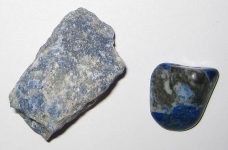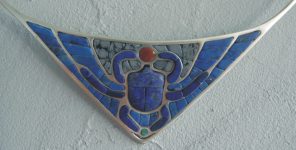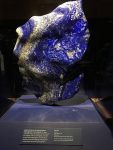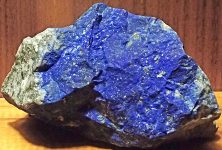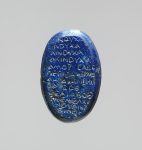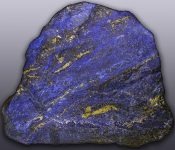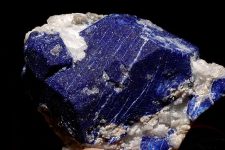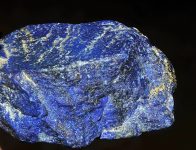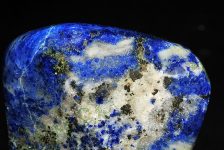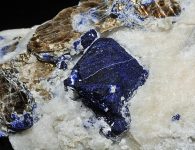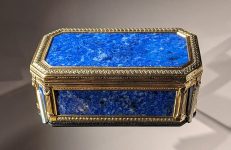Lapis Lazuli
ABOUT LAPIS LAZULI
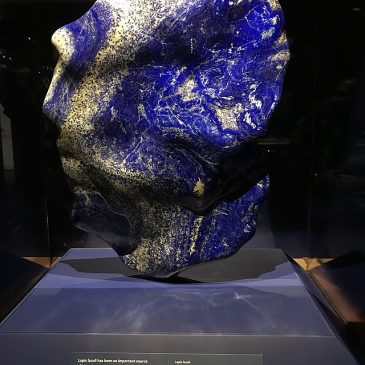
About: Lapis lazuli, often simply referred to as lapis, is a deep-blue metamorphic rock prized for its intense color and historical significance. It has been used for thousands of years as a gemstone, pigment, and ornamental stone. This guide provides an in-depth look at lapis lazuli’s characteristics, history, sources, uses, and significance.
Mining: Lapis lazuli is typically extracted through traditional mining methods. In Afghanistan, miners use simple tools to extract the rock from mountainous deposits. Modern techniques include blasting and drilling.
Processing: Extracted lapis lazuli is cleaned, cut, and polished to enhance its natural beauty. For pigment production, the rock is ground into a fine powder and purified.
CHARACTERISTICS
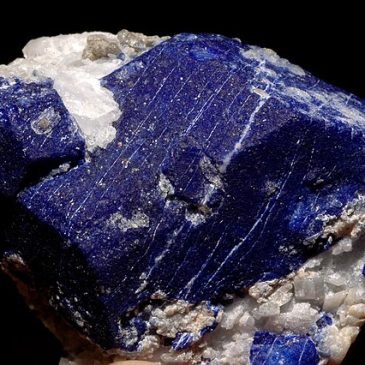
Color: Lapis lazuli is typically deep blue, often with specks or streaks of white calcite and golden pyrite inclusions.
Chemical Composition: Lapis lazuli is a rock primarily composed of the mineral lazurite (a sodium calcium aluminum silicate), along with calcite, pyrite, and other minerals.
Density: Lapis lazuli has a density of about 2.7-2.9 g/cm³.
Crystal Structure: Being a rock rather than a single mineral, lapis lazuli does not have a distinct crystal structure but is composed of an aggregate of various minerals.
Luster: Lapis lazuli exhibits a vitreous to greasy luster, especially when polished.
Hardness: Lapis lazuli has a Mohs hardness of 5 to 5.5, making it relatively soft and suitable for carving and inlay work.
Transparency: Lapis lazuli is typically opaque.
HISTORY AND LORE
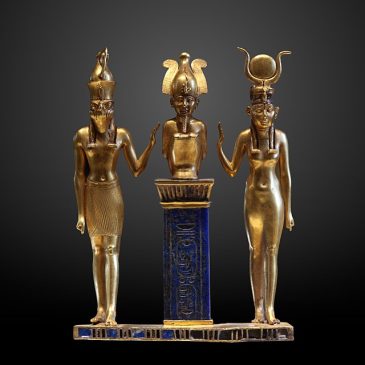
Ancient Civilizations: Lapis lazuli has been treasured since antiquity. The ancient Egyptians used it for jewelry, amulets, and inlays, while the Mesopotamians, Greeks, and Romans valued it for seals, carvings, and ornaments. It was also ground into powder to produce the vivid ultramarine pigment used in Renaissance paintings.
Middle Ages: During the Middle Ages, lapis lazuli was used to produce ultramarine pigment, one of the most expensive and sought-after pigments for manuscript illumination and painting.
Modern Era: Today, lapis lazuli remains popular for jewelry, carvings, and decorative objects. It is also valued for its historical and cultural significance.
SOURCES
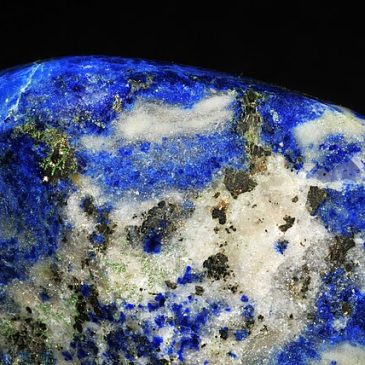
Geographical Locations: Major sources of high-quality lapis lazuli include Afghanistan (particularly the Sar-e-Sang deposit in Badakhshan), Chile, Russia, Myanmar, and the United States.
Geological Formation: Lapis lazuli forms in contact metamorphic rocks, often in marble. The blue color is primarily due to the presence of lazurite, a complex sodium calcium aluminum silicate.
USES

Jewelry: Lapis lazuli’s rich blue color and relative softness make it an excellent material for cabochons, beads, and inlay work in jewelry. It is often set in silver or gold to create striking pieces.
Decorative Objects: Lapis lazuli is used to create a variety of decorative items, including carvings, vases, boxes, and mosaics. Its distinctive color and aesthetic appeal make it a favorite for ornamental purposes.
Pigment: Historically, lapis lazuli was ground into a fine powder to produce ultramarine pigment, used in Renaissance and Baroque art. While synthetic ultramarine has largely replaced natural lapis pigment, it remains important in art restoration.
Collecting: Lapis lazuli is prized by mineral collectors for its beauty and historical significance. High-quality specimens and artifacts are highly sought after.
Metaphysical Uses: In the metaphysical realm, lapis lazuli is believed to have various healing properties. It is thought to promote wisdom, truth, and self-awareness. Lapis lazuli is also used in meditation and energy healing practices.
CULTURAL AND SYMBOLISM
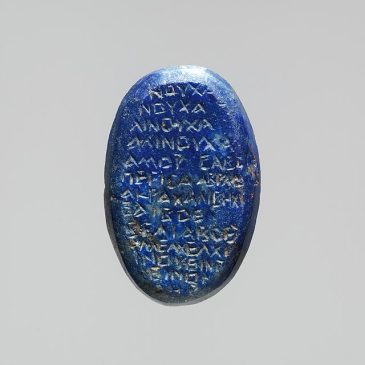
Symbol of Royalty and Honor: Lapis lazuli has long been associated with royalty, honor, and spirituality. Its deep blue color symbolized the heavens and was often used in sacred objects.
Historical Usage: The use of lapis lazuli in ancient jewelry, amulets, and pigments highlights its cultural and historical significance.

